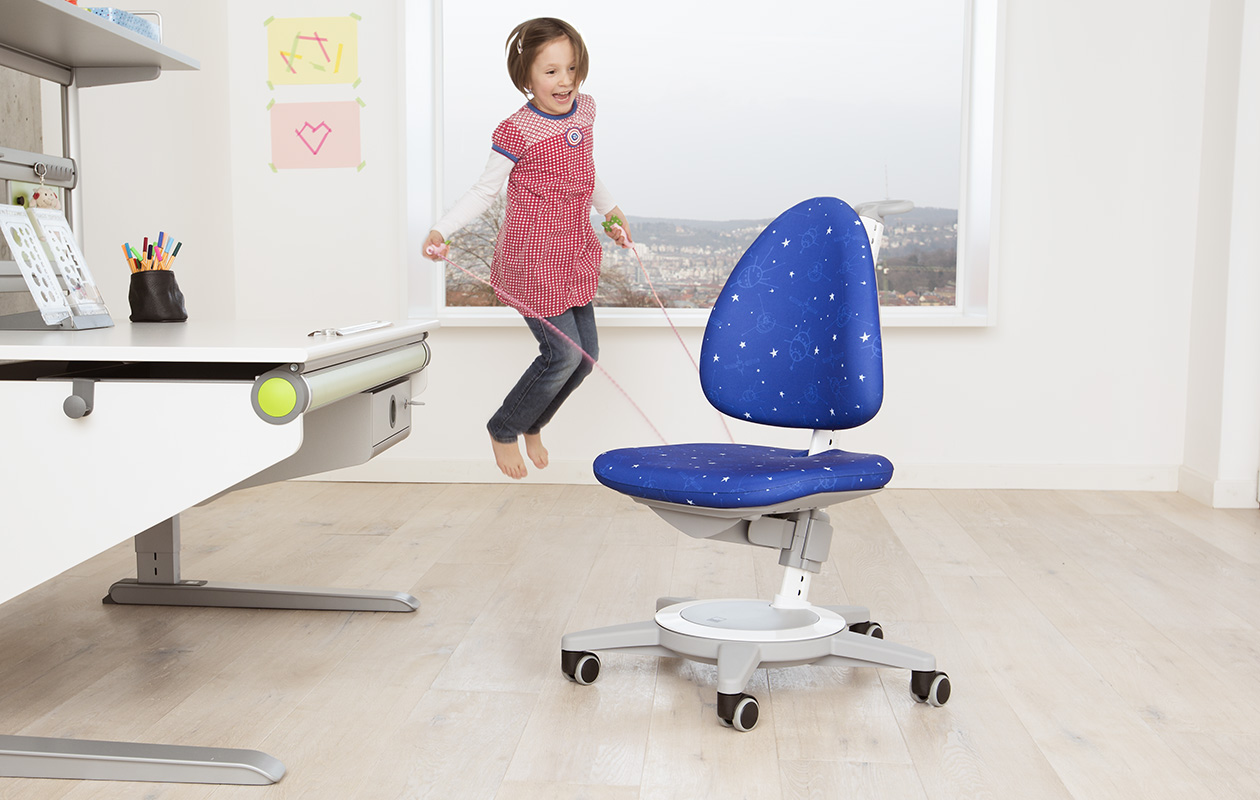
movement makes you smart
interview with Dr. Dieter Breithecker
Movement, health and education are closely related, according to a statement by Germany’s Federal Association for Posture and Exercise. We talked to Dr. Dieter Breithecker to fi nd out what that means for our children.

Why is movement so important, and why do you say it is the basis for healthy physical and mental development?
By nature, children are made for movement. Movement is the engine of children’s development and the indispensable prerequisite for physical and mental development. Right to the end of the elementary school years, highly sensitive development processes take place that — given the right opportunities — spontaneously prompt versatile, enthusiastic, voluntary movement. Movement has to go right to the bone. Playfully exploring, discovering and mastering their environment is key and can be even more important than sports. This activity mainly comes at the child’s own initiative. They generally sense intuitively which impulses are productive for them. But they need a lot of time and room to experiment, take risks and make mistakes. That is the basis for their learning.
The times are gone when children could run free and organize their own exercise and activity. And what are the consequences?
The behaviors described above can no longer be taken for granted, even when children’s parents or guardians aren‘t supervising. Kids spend too much time in enclosed spaces. These spaces offer too few options for movement. Of course, people try to compensate for that with sports and other exercise, but they don’t have the same value for children’s development as play and exercise that the children and their friends organize themselves. Sedentariness has quickly become a defining feature of human existence. This doesn’t just cause a variety of health consequences, but important core skills — including social skills — are affected.
There is often talk about the “chair inertia trap” our kids now find themselves in. What do you mean by that, exactly?
Children find themselves in the “chair inertia trap” when they spend a lot of hours sitting during the day. Studies show that even children at elementary school age sit as long as nine hours a day, on average. But this isn’t only the fault of school and homework. Uncontrolled use of game consoles, smartphones, TV and other devices is an under estimated risk factor. Naturally, these options hold fascination for our children. They can also be discovered and experienced, but in moderation. This is because passive consumption of multimedia does not offer the necessary impetus for physical and mental development that varied exercise with other children does. Every excess hour spent with digital media is lost learning time for the body.
What should parents at home do to keep their children from sitting around all the time?
Sitting in itself isn’t harmful. It’s the length of time and the lack of movement that are the problem. By nature, kids can’t sit still longer than about three minutes anyway. On the chair, they intuitively and spontaneously change their sitting position. But they best like to crouch or lie on the floor. In this regard, we talk about natural, “body-intelligent” changes of position. Parents should accept them and not suppress them. The rule: No more sitting than necessary, and move and change positions as much as possible. Another way to meet children’s need to move is to incorporate a mini-trampoline or a high desk into the child’s room.
And how can parents assist their children in developing their movement?
It is crucial that they set an example and take an interest in the quality of movement their children really need for development. They should always ensure that children have the opportunity to move. Healthy development requires activity every day. Biking, climbing stairs, doing chores at home or in the yard, walking to daycare or school, etc., don’t take much effort, but they are important in promoting movement for physical and mental development. More of an effort, and more challenging, are activities like climbing, wrestling, running, playing ball and balancing. They make kids break a sweat and breathe harder. It is an advantage when growing kids in the elementary years pursue an additional challenging sport in school or on a team. Children’s interests and inclinations should be considered here.


